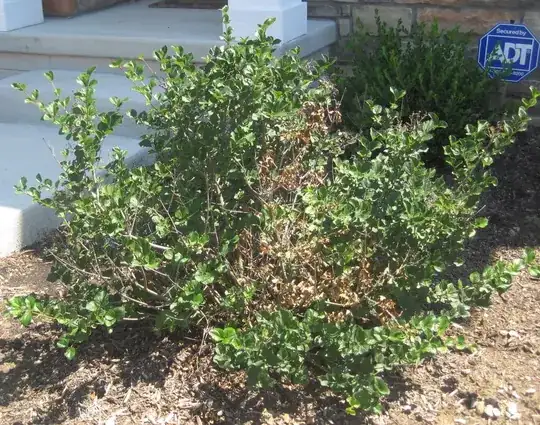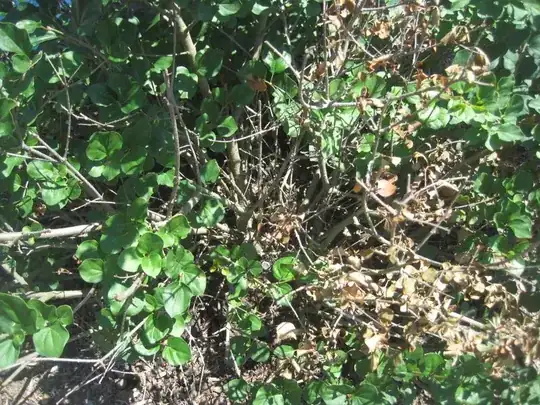From above comment: Definitely full sun. Top 6 inches of the soil is topsoil that the landscaping company provided, it's pretty good for drainage. Under that is clay. We water if it doesn't rain probably every other day. Can't recall the mulch. Leaves turn more like gray/green instead of yellow.
I think it could be either:
The clay layer under the top 6 inches (150 mm) of top soil is holding too much water, thus the Lilac's roots are constantly sitting in water, which isn't a good thing for nearly all plants/shrubs/trees...
Your watering too frequently, but not giving the Lilac enough water.
What can you do (assuming I have the above correct)?
Dig a hole 12 inches (300 mm) deep "near" the Lilac and examine how wet the soil is at that depth.
If it appears to be "too wet" you will need to improve the drainage of the soil under and around the Lilac. How?
Wait until early Autumn (Fall), beginning of September is normally a perfect time for doing something like this.
Carefully dig around the Lilac (you want to limit root damage as best as you can), then carefully get under the root ball, lift gently out of the ground and put to one-side.
If the excavated root ball contains a lot of clay, very carefully remove as much of it as you can (without damaging the root system). Also remove all the "dead" leaves and prune out any "dead" branches (otherwise I wouldn't prune at this time of year). Basically just tidy up the plant.
Now widen the hole as much as is practical (the wider the better) and dig down to a minimum of 12 inchs (30 0mm), 18 to 24 inches (450 to 60 0mm) would be better (IMHO).
Fill the hole with enough 50/50 mix of top quality (sieved) top soil and high quality (sieved) compost, so that when you put the Lilac back in the hole the top of the root ball sits level with the surrounding soil ie don't plant low in the hole. If you have to put more than a 4 inch (100 mm) thick layer of 50/50 mix in the hole to get back up to planting level, "lightly" tamp down each layer.
Once the hole is back filled to planting level, carefully lift the Lilac and gently place it in the hole. Check from multiple angles that the plant is sitting level in the hole. Level the plant as necessary.
Back fill around the root ball with more of the 50/50 mix, "lightly" tamping down each 4 inch (100 mm) thick layer.
Put down a 2 inch (50 mm) thick layer of mulch. Personally, I mulch with homemade (sieved) compost or shredded Autumn (Fall) leaves. The mulch should not touch the plant itself, start about 4 inches (100 mm) away and work out from there.
Water slowly & deeply. Water should be delivered at soil level.
If there is no rain, water slowly & deeply once a week (twice a week at the most in the heat of summer).
If it doesn't appear to be "too wet", changing your watering habit's is probably the only thing you need to do.
When there is no rain, water slowly & deeply once a week (twice a week at the most in the heat of summer).
Additionally remove all the "dead" leaves and prune out any "dead" branches (otherwise I wouldn't prune at this time of year). Basically just tidy up the plant.
From above comment: Leaves turn more like gray/green instead of yellow.
Another possibility could be a form of powdery mildew, refer to the following:
Just catching up on some "gardening" reading, and one of the articles talks about "Verticillium Wilt":
Hot, dry weather causes stress to plants as well as people. Wilting is a normal plant response to a lack of water, but severe wilting, partial-plant wilting, and flagging are all symptoms of Verticillium wilt. This disease is common and recurring in Illinois. The causal fungi are found throughout the state.
Just another possibility to look into, especially given that Lilac is susceptible to this disease (refer to University of Minnesota Extension link below):

